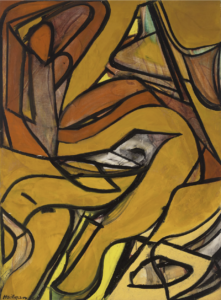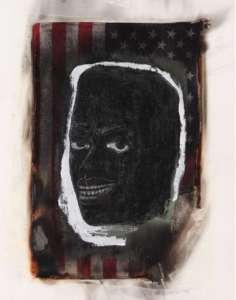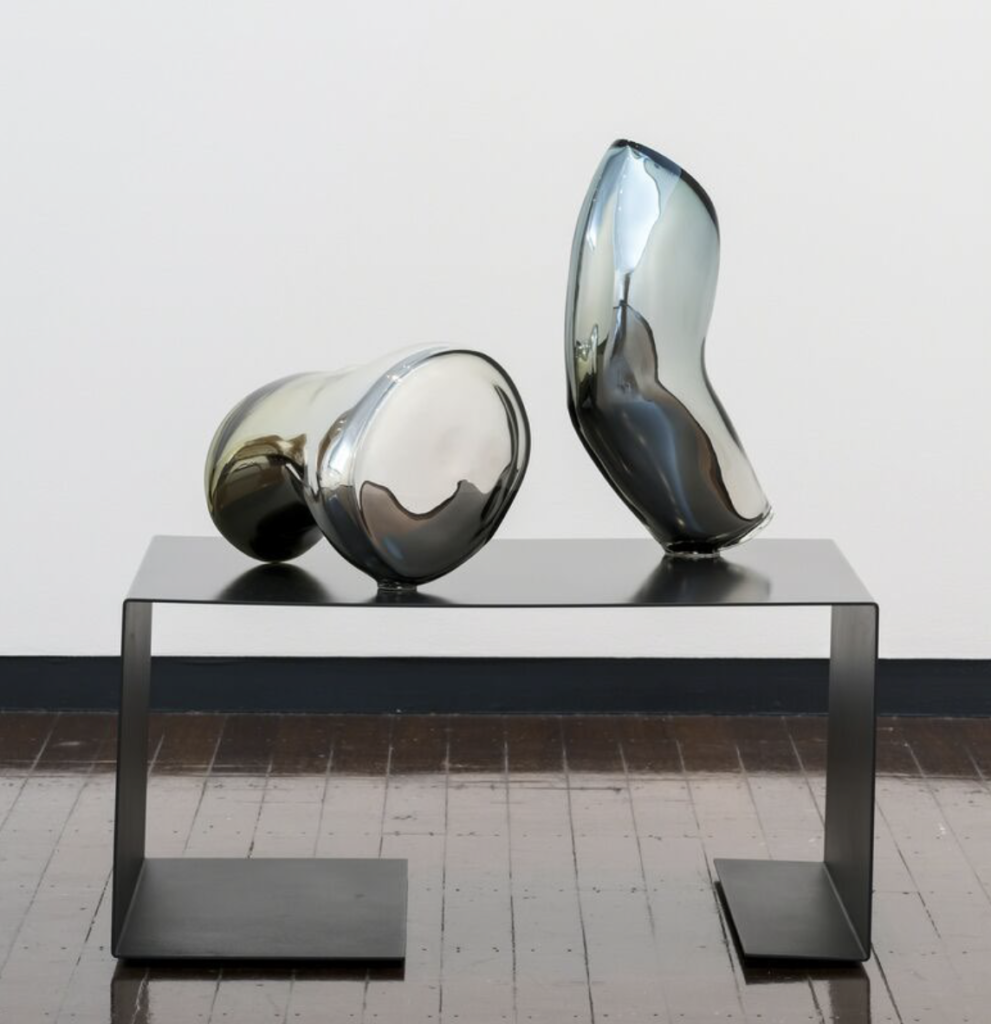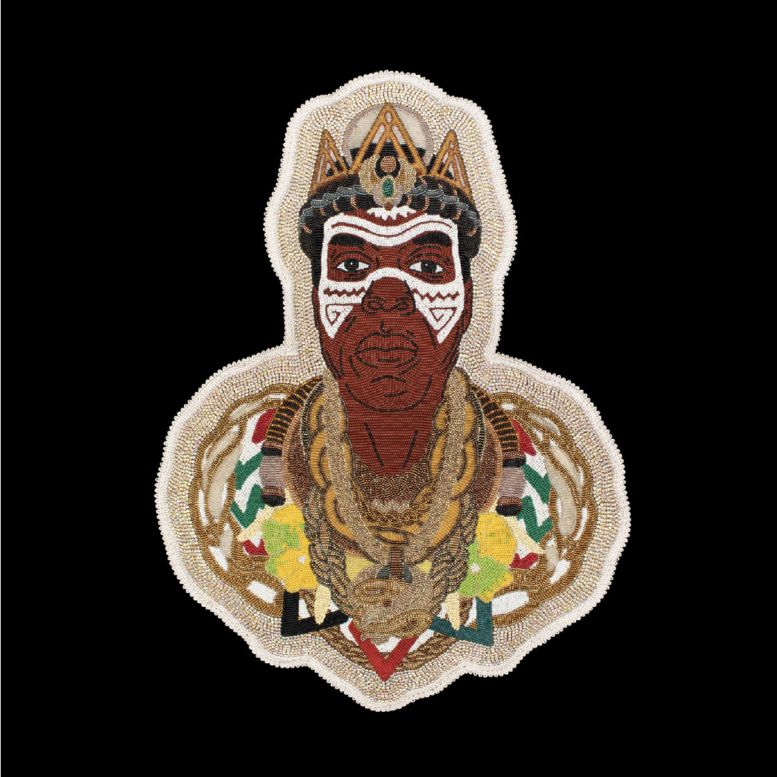From TOLEDO MUSEUM OF ART
This year, the Toledo Museum of Art (TMA) has acquired 27 works to date, including eight bequests, all advancing the Museum’s collecting strategy. The additions include paintings, beadwork, glass, multimedia and more that span thousands of years, with some objects dating as far back as fourth century B.C. Works by African American artists, Indigenous artists, women artists and others are strongly represented among the new holdings.
“These new acquisitions demonstrate the Museum’s collecting strategy in action, with each curator adding superlative artworks to our collection,” said Adam Levine, Edward Drummond and Florence Scott Libbey director of the Museum. “As we continue to grow our curatorial ranks and our acquisitions, we will further demonstrate that a relentless focus on quality and a commitment to a culture of belonging result in a broadened narrative of art history.”
Working through the lens of a collecting strategy that aims to intentionally reflect the communities the Museum serves, TMA’s growing curatorial team is taking a collaborative approach to acquisitions. Each curator lent their expertise to the selection process, and the added works allow for reinterpretation of the existing collection while bringing new stories to the galleries.
Erin Corrales-Diaz, curator of American art
For Erin Corrales-Diaz, curatorial work is a civic duty. While TMA’s holdings by American artists such as Henry Ossawa Tanner, Winslow Homer, Willie Cole and Ralph Albert Blakelock initially drew her to the institution, she is committed to challenging and expanding the current definition of American art. Since being named TMA’s curator of American art in November 2021, she has introduced exceptional beadwork, paintings and works on paper to the collection.

Grace Hartigan’s Harvester (1966) is among those recent acquisitions. The striking example of Abstract Expressionism joins just one other example of gestural painting in TMA’s collection, Willem de Kooning’s Lily Pond (1959). Not only is the large-scale canvas a strong example of female Abstract Expressionism, but the work, produced in Baltimore, also contributes to narratives about art centers outside of New York.
“Harvester, with its dynamic composition, vivid color palette and bold mark making, is an important acquisition to TMA’s collection. This transitional work of Abstract Expressionism rectifies past art historical biases, expands the individual expression so prevalent in the style and broadens the narrative of American art,” said Corrales-Diaz.
Jessica Hong, curator of modern and contemporary art
Although Jessica Hong’s focus is on modern and contemporary art, she selects new acquisitions that will also connect with historical works in the Museum’s collection. “The acquisitions we collectively have made thus far in 2022 not only support our mission to broaden the narrative of art history, but also draw out cross-cultural and cross-temporal dialogues throughout our galleries,” said Hong.

Hong’s new acquisitions in 2022 to date include Jeffery Gibson’s She Walks Lightly (2012) and Kerry James Marshall’s Portrait of a Black Man in a World of Trouble (1990).
She Walks Lightly is an early example of Gibson’s pivotal and celebrated Everlast punching bag series, which incorporates his former abstract paintings with elements often associated with Native American traditions and culture, such as beadwork and jingles, that are simultaneously embedded with complex historical and global narratives. “Jeffery Gibson’s work addresses Indigenous traditions and identity, gender, performance, material culture and global trade that intersect with works we hold from artists like Olga de Amaral, Magdalene Odundo, Wendy Red Star and Marie Watt, as well as works in our historic Native American, American and European collections,” Hong said.
In Portrait of a Black Man in a World of Trouble, a work acquired from prominent Chicago-based collector Phillip Gant, Marshall uses a charred American flag as the substrate for his figurative painting of a Black man. “This powerful and significant early work contends with the centuries-old tradition of figurative painting and its fraught legacies, which continues to be relevant in today’s sociocultural environment, and speaks to many of the historical portraits in TMA’s collection. Moreover, it has great resonance with other contemporary artists in the collection who also engage and expand art historical discourses, such as Diana Al-Hadid, Titus Kaphar and Kehinde Wiley,” Hong said.
Sophie Ong, Hirsch curatorial fellow
Sophie Ong, TMA’s Hirsch curatorial fellow, began her two-year appointment at TMA focused on the Museum’s glass collection. However, her interest in a global view of the art of the Middle Ages, which is the subject of her Ph.D. at Rutgers University, has expanded her purview. With this dual focus, she has broadened the Museum’s collection with works of contemporary glass by Nadège Desgenétez and Erica Rosenfeld as well as the sixth/seventh-century C.E. Plate with a Goddess, a magnificent example of Sasanian silversmithing. The work is considered one of the most significant examples of the Greco-Roman influence on Sasanian artistic production. The luxury metalwork’s inscription suggests it was used as payment for a service rendered.

“Manifesting the pleasures of the Sasanian court bestowed upon loyal subjects, Plate with a Goddess is a superlative example of Sasanian silversmithing that was a part of long-held traditions of courtly gift exchange and ritual banqueting. Its acquisition directly supports the Museum’s collecting strategy to acquire works of art of exceptional quality that tell a truly global history of art,” said Ong. “The plate coalesces Classical Greco-Roman iconographic traditions with thematic ideas and ornamental motifs from Sasanian Iran and Hellenistic Asia. It not only testifies to the longevity of Greco-Roman artistic influence in Persia and Mesopotamia but also reveals how Classical motifs were absorbed into a distinct visual culture that reflected the sophisticated, aristocratic culture of the Sasanian Empire.”
Carlos A. Picón, consulting curator of ancient art
Founded by TMA donors David and Georgia Welles and named for the Museum’s ceramic masterwork Apollo by Henri Matisse, The Georgia Welles Apollo Society is comprised of donors who pool their membership dues annually to purchase an artwork for TMA’s collection. Since its founding in 1986, The Apollo Society has purchased more than 50 works for the Museum. Carlos A. Picón, consulting curator of ancient art, worked with the Apollo Society this year to bring a Greek silver gilt bowl into the collection.

The luxury object, which gained popularity in fourth century B.C., features imagery that resembles a female Cupid. The iconography is particularly fascinating as most objects of this kind depicted Eros or Maenads, female followers of Dionysus who were not winged as the female figure on TMA’s new vessel. Scholars believe the bowl, which has been known for more than a century, originated in the region of Kerch in the Crimea, an important Greek settlement and port in the Black Sea that yielded antiquities of high quality and interest.
“Collecting great works of art is at the heart of our mission—and the search for them is one of the great pleasures and privileges of a museum curator. The Greek silver gilt bowl selected by The Apollo Society is not only an example of remarkable workmanship but also features iconography that combines elements and attributes of various Greek deities into a single figure. It is wonderful to see this highly unique piece join our collection here in Toledo,” said Picón.
Robert Schindler, William Hutton curator of European art
Robert Schindler is eager to reinterpret TMA’s collection while acquiring works that more accurately represent art history as well as the communities the Museum serves. Since joining TMA’s team on March 1, he has added to the collection a remarkable still life by Dutch painter Maria van Oosterwijck. The painting, which will undergo conservation before going on view, is one of the largest and most ambitious by this artist.
TMA holds several remarkable still lifes by women artists, including a flower still life by Rachel Ruysch, who followed Oosterwijck’s example as a female professional woman artist working in late 17th-century Amsterdam.
“The acquisition of a work by Maria van Oosterwijck provides a variety of interpretative opportunities for the Toledo Museum of Art. It enables us to speak in a more nuanced way to the experiences and realities of female artists working in the pre-modern era. Like many other female artists working at this time, she is under-recognized, under-researched and under-represented in museum collections, which is at odds with the great acclaim she experienced during her lifetime. As we seek to expand the narrative of art history, acquisitions that allow us to celebrate the lives and legacies of women artists from across time and geography are among our priorities,” Schindler said.
Diane Wright, senior curator of glass and contemporary craft
Stephen Paul Day’s End of the Empire (2020) is one of the most recent standouts of the many works Diane Wright has brought into TMA’s collection during her nearly five years at the Museum. The cast glass artwork references Napoleon Bonaparte at the time of the Louisiana Purchase, an agreement in which the French sold a large parcel of land to the United States. The depiction, which presents the leader with his head slumped, is a departure from how he is traditionally shown with a confident posture. Day created the work in his New Orleans studio, where lack of air conditioning caused the figure to buckle under extreme heat during the wax phase of the casting process. Though unplanned, the artist kept the altered form, which came to represent Bonaparte’s reaction to the loss of the land.
Day used black glass to reference the history of slavery in New Orleans and the city’s current commitment to embrace Black cultures. “Stephen Paul Day’s End of the Empire gives the traditional bust form a twist,” said Wright. “Dangling at the end of a pipe cast from a piece of PVC, an unquestionably modern material, the lifeless head of Napoleon Bonaparte in black glass connects past to present as Day brings awareness to New Orleans’ history as well as the impact of the past on current life in the city. Adding this contemporary work to the Toledo Museum of Art’s collection allows it to be in direct conversation with the traditional bust form found throughout our galleries—from the Roman emperors in Classic Court to the 19th-century white marble sculpture in the American galleries.”
Complete list of 2022 Acquisitions
Art Committee Purchases
Sasanian, Plate with a Goddess, sixth-seventh century, silver, Purchased with funds from the Libbey Endowment, Gift of Edward Drummond Libbey
Zilia Sánchez, Sin título [Untitled], 1962/1990 (restored 1971), acrylic on stretched canvas, Purchased with funds from the Florence Scott Libbey Bequest in Memory of her Father, Maurice A. Scott
Demond Melancon (American, born 1978), The Future and Now, 2021, glass beads and rhinestones on canvas, Purchased with funds from the Mrs. C. Lockhart McKelvy Fund and the Art Acquisition Endowment Fund
Grace Hartigan (American, 1922-2008), Harvester, 1966, oil on canvas, Purchased with funds from the Libbey Endowment, Gift of Edward Drummond Libbey
Robert Cromartie (American, 1929-2007), Portrait of an African American Soldier, 1954, oil on linen canvas, Purchased with funds from the Libbey Endowment, Gift of Edward Drummond Libbey
Stephen Paul Day (American, born 1954), End of the Empire, 2020, cast glass, Museum Art Fund
Jeffrey Gibson (American, Mississippi band of Choctaw and Cherokee, born 1972), She Walks Lightly, 2012, Everlast punching bag, wool, canvas, repurposed painting, glass beads, shell, steel, tin jingles, sequins, nylon fringe, Purchased with funds from The Joseph and Kathleen Magliochetti Fund
Kerry James Marshall (American, born 1955), Portrait of a Black Man in a World of Trouble, 1990, acrylic on miniature burned American flag mounted by the artist to four-ply mat board, Purchased with funds from the Jamar Art Fund of Marvin and Lenore Kobacker, the Mr. and Mrs. Robert J. Barber Art Fund, the Mrs. George W. Stevens Fund, and the Florence Scott Libbey Bequest in Memory of her Father, Maurice A. Scott
Erica Rosenfeld (American, born 1975), Cumulus Necklace, 2021, blown glass, titanium coating, glass rhinestone, Japanese glass seed beads, silicone, wire, Museum Art Fund
Nadège Desgenétez (French, born 1973), Flow, Body Scape, 2016, glass, metal, Purchased with funds given by Rita Barbour Kern, and Gift of Richard C. and Betty G. Veler, by exchange
Maria van Oosterwijck (Dutch, 1630-1693), A bouquet of flowers in a Rhine stoneware vase on an entablature with an arrangement of shells, about 1685, oil on canvas, Purchased with funds from the Mr. and Mrs. George M. Jones, Jr. Fund, the Stephen D. Taylor Family Foundation, the Libbey Endowment, Gift of Edward Drummond Libbey, and Gift of Mrs. C. Lockhart McKelvy, by exchange
Bequests
James Abbott McNeill Whistler, The Doorway from A Series of Twelve Etchings (The First Venice Set), 1879-1880, etching, drypoint, and roulette, Bequest of Barbara Reed
James Abbott McNeill Whistler, Early Morning, Battersea from A Series of Sixteen Etchings of Scenes on the Thames (The Thames Set), 1861, etching and drypoint, Bequest of Barbara Reed
James Abbott McNeill Whistler, Little Pool from A Series of Sixteen Etchings of Scenes on the Thames (The Thames Set), 1861, etching and drypoint, Bequest of Barbara Reed
James Abbott McNeill Whistler, Quiet Canal from A Set of Twenty-Six Etchings (The Second Venice Set), 1879-1880, etching on thin paper, Bequest of Barbara Reed
James Abbott McNeill Whistler, Street at Saverne, 1858, etching on paper, Bequest of Barbara Reed
James Abbott McNeill Whistler, The Unsafe Tenement from Douze Eaux-Fortes d’après Nature (The French Set), 1858, etching on paper, Bequest of Barbara Reed
James Abbott McNeill Whistler, Upright Venice from A Set of Twenty-Six Etchings (The Second Venice Set), 1879-1880, etching on paper, Bequest of Barbara Reed
Sir Francis Seymour Haden, Fulham; Sunset on the Thames, 1859, etching and drypoint, Bequest of Barbara Reed
David and Georgia Welles Apollo Society Gift
Greek, Bowl with Embossed Roundel, late fourth-third century B.C. (early Hellenistic period), gilt silver. Gift of The Georgia Welles Apollo Society
Gifts
Eva Eisler, Ring, 1990, silver, Gift of Dorothy Saxe
Giselle Courtney, Untitled (Necklace), about 1990s, flameworked borosilicate glass with metal wire, Gift of Dorothy Saxe
Joyce Scott, Untitled (Brooch), 1988, seed beads, wire, thread, Gift of Dorothy Saxe
Peter Chang, Untitled (Bangle), 1992, acrylic, polyester resin, PVC, silver, Gift of Dorothy Saxe
Richard Marquis, Teapot Sample Box with Lustre Bird, 1993, blown glass, plate glass, enamel, mixed media, Gift of Joan and George Haigh
Ruth Goodman, Aerial View, about 1985, sterling silver, 14k gold, Gift of Dorothy Saxe
Werner Pfeiffer (American, born 1937), Seasons Greeting Card, 2021, mixed media collage (mirror) on paper, Gift of Werner Pfeiffer





